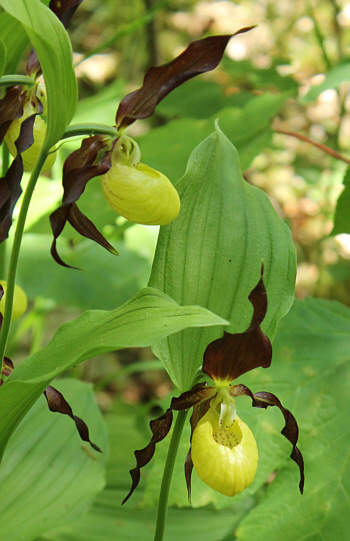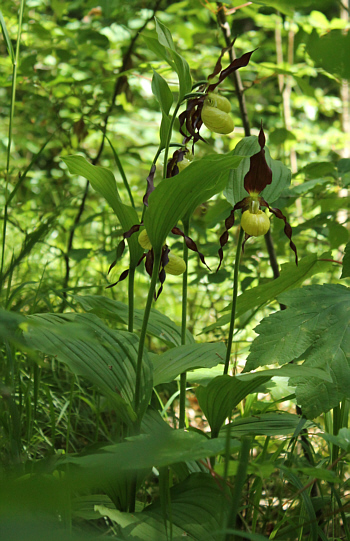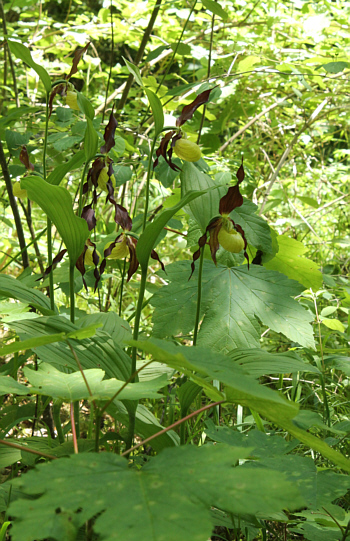Lady’s Slipper (Cypripedium)
Overview
The genus Cypripdium is distributed with circa 50 species on the whole northern hemisphere. In Central Europe is only one species native, namely the European Lady’s Slipper (Cypripedium calceolus). This species is undoubtedly the most splendid and conspicuous European orchid. In South Germany this species is not very rare, but the population is declining. Furthermore, mostly are only small groups to be found, very rarely greater populations. The species is mainly to be found in deciduous forests, but is sometimes also to be found in coniferous forests. The European Lady’s Slipper is relative demanding concerning light regime. The species doesn’t tolerate locations in full sun, it grows rather in sparse forests, on clearings or along the edge of the forest. However, locations in full shadow are avoided equally as locations in full sun. The locations are in need of care and require a lot of experience concerning light regime. If the release of the plants is done too late, a population could also be destroyed, as if the release is too radical.
In the far east of Europe two further Lady’s Slipper species are native, namely the Spotted Lady’s Slipper (Cypripedium guttatum) and the Large-flowered Lady’s Slipper (Cypripedium macranthos).
The European Lady’s Slipper (Cypripedium calceolus) has been chosen as German orchid of the year 2010.
flower details for illustration of the pollination physiology
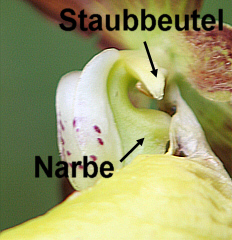
Gynostenium with stigma (Narbe) and anther (Staubbeutel).
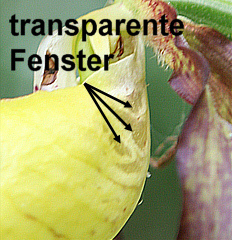
Transparent windows (transparente Fenster) as direction indicator.

2 exits (Ausgänge) at the lip basis.
Pollination physiology is – like with Bee Orchids – very interesting. Lady’s Slippers have three stamens. The lateral stamens have each one anther, which doesn’t show to one pollinium agglutinated pollen in contrast to most other European orchids, but produces the pollen rather as greasy mass. The third stamen is located as sterile staminodium in the lip mid (the grooved, white structure with red points). Direct under the staminodium is the green stigma. Lady’s Slipper are kettle traps, the pollination takes mainly place by sand bees. Once these are blundered into the lip, so they are initially trapped. The inside area of the lip is smooth, hereof excluded is a hairy stripe from the lip bottom backwards to the lip basis, which quasi serves as escape route. As ‚emergency exit sign‘ serve transparent windows in the posterior part of the lip, which attracts insects. On its way to freedom the insect must first force itself under the downwards pointed stigma. Thereby the insect transfers potential pollen, which is on its back, and fertilizes the flower in this way. Then the escape route branches into two routes, one on the left, the other on the right of the gynostenium. Here is the anther, which smears the pollen on the insect back. The flower prevents a self pollination by this spatial structure.
Cypripedium calceolus
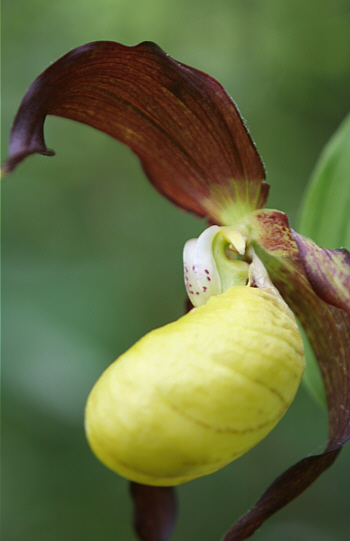
26.05.2007, near Nördlingen, Germany
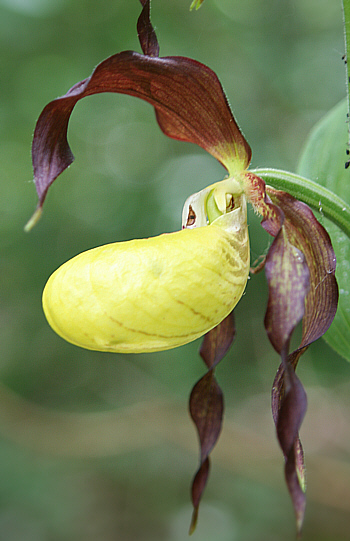
26.05.2007, near Nördlingen, Germany
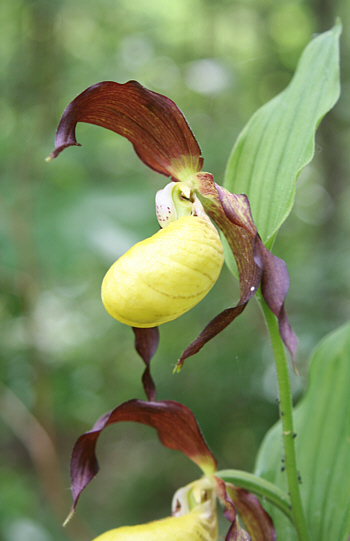
26.05.2007, near Nördlingen, Germany
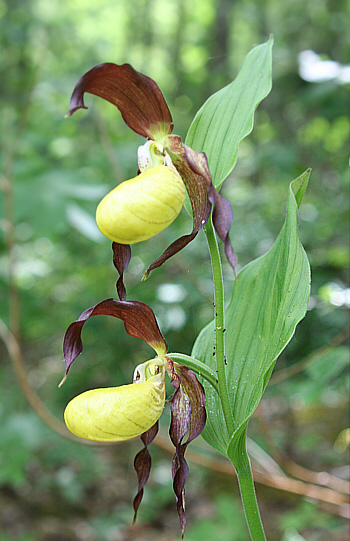
26.05.2007, near Nördlingen, Germany
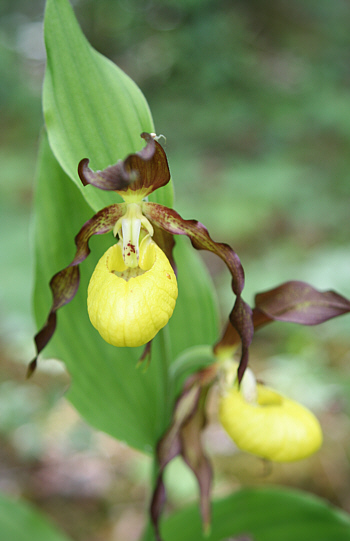
26.05.2007, near Nördlingen, Germany
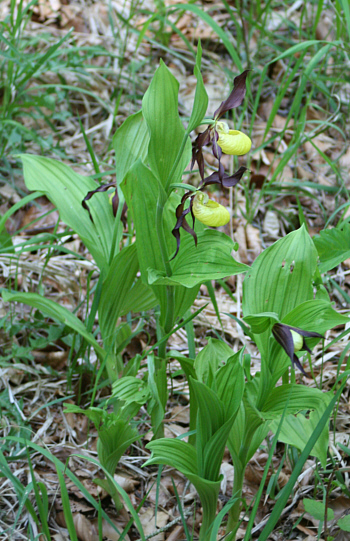
25.05.2007, district Heidenheim, Germany
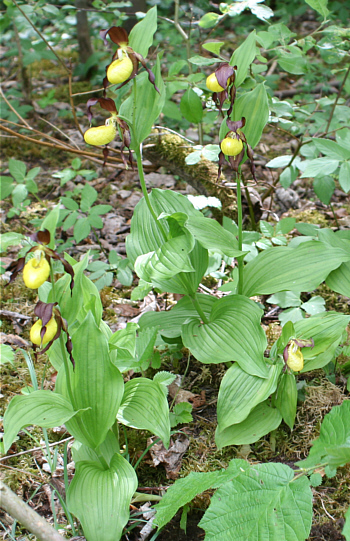
26.05.2007, near Nördlingen, Germany
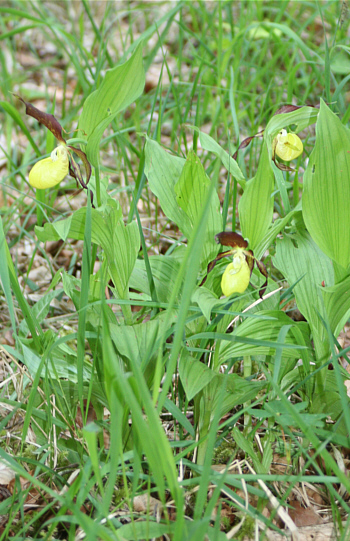
25.05.2007, district Heidenheim, Germany

